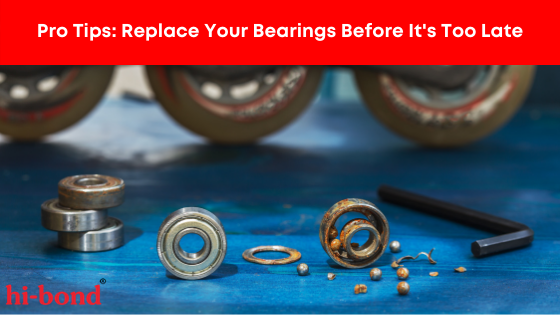How integral are bearings in the daily operations of industries? They are a fundamental component of most operations. So, they need to be in prime health for superior functioning.
There is a common belief that prevails regarding bearings’ lifespan. It is that it can be used until death, but it is wrong. The operational life can be estimated with the help of a calculation formula called rule L10 life of the bearing.
However, it is not feasible to calculate this for every other bearing, given its volume and variety. Several factors impact the life of a bearing. To make life easier, here are:
4 signs to look out for in a bearing that might help you replace it before it is too late.
Excessive noise
This is an easy sign to spot in a bearing. During the functioning, if it is fabricating noise that is too loud for the liking, it is a potential red flag. Bearing failure is not too far away if excessive noise can be detected. The causes for excessive noise are poor fit. Also, deformed bearing rings are a common reason behind unnecessary noise being generated during the functioning of a bearing.
Bushings in cars are a prime example where excessive noise can lead to catastrophe. Drivers may hear rattling noises when driving. This can be caused due to worn out bearings that facilitate metal to metal contact. This can be solved by altering the speed of movement or increasing the lubrication. However, these are remedies to extend its life by a small margin. For comprehensively solving the issue of excessive noise, replacing it is the final solution.
Contamination
This sign is slightly difficult to notice as the diminutive size of bearings hampers the visibility. Alongside, the minute contaminants further make it difficult for noticing.
The ingress of solid foreign objects directly results in roughening and also contributes to the speckles on the bearings.Those tiny dents, upon further use, shall facilitate the chipping of the rings.
Bronze sleeve bearings are often used when the loads are very high. Imagine, if there are solid contaminants in them, the result would be disastrous.
Not only solid contamination, but it’s liquid or chemical counterparts are equally detrimental to its life. Any kind of liquid contaminant reduces the viscosity of the lubricant. This means bearings cannot perform their fundamental function of reducing friction.
Note that poor lubrication is a profound reason behind its failure. Therefore, allowing any kind of contamination renders the bearings useless. Spotting the contaminants and removing them effectively is your best solution. Whilst difficult, this can be done with regular inspection of bearings.
In case of acute contamination, replacing it is your best bet.
Bearing temperature
The functioning of bearings is possible only with a temperature higher than that of room. However, upon heat dissipation and stabilizing, the temperature of the bearings regulates itself.
This regulation may take several minutes or hours, depending on several other factors. Some of them are load, speed, type of bearing, lubrication, etc.
Yet, there are several cases where the bearing temperature exceeds normal limits. Whilst the reasons behind these are not singular, they boil down to a few major causes.
- Extremes of lubrication — Both insufficient and excessive lubrication increases the temperature.
- Improper installation
- Sealing conditions —Misalignment of seals, extremely tight seals contributes to increased friction and more heat.
These are the most common reasons why bearings’ temperature increases. The optimal solution is to improve lubrication. Effective lubrication ensures the heat generated is dissipated easily. Apart from the heat dissipation, there are other benefits of effective lubrication too.
- Reduces friction
- Prevents abrasion
- Extends the’ lifespan
- Reduces rust and corrosion
- Keeps foreign elements and contaminants away from the rings
Excessive Vibration
By measuring the vibration of the bearing, its health can be determined. The amplitude and frequency of the vibration are used to analyze the damage caused. Due to the vibration, the contacting elements move slightly. This reduces the lubricant’s action on the bearings’ movement.
The aforementioned issue contributes to reduced friction, which furthers the wear and tear of the surfaces. Excessive vibration is also a direct cause of fretting among bearings. Constant fretting produces rust-colored particles and voids. Also, dents are caused on the surfaces, which is termed ‘false brinelling’.
Looseness and surface damage are two profound conditions due to excessive vibration.
To reduce this, selecting the right number of rolling elements is the key. And the optimum amount of preload in the bearing needs to be carefully chosen. These two measures reduce undue vibration while increasing the system stiffness of the bearings.
Despite these measures, excessive vibration is a recipe for disaster. Therefore, replacing them is a must, if the undue vibration does not recede.
Final Words:
While replacing a bearing, it is imperative to correct the previous mistakes. Understanding the load and functions, choosing the right bearing is important. There are several options to choose from, with each type catering to a different use.
Likewise, choosing a quality company that manufactures bearings is also important. With more than 30 years of market experience, Hi-Bond Bearing Pvt Ltd leads the bearing manufacturing industry. For the best bearings to ensure smooth movement of your machinery contact Hi-Bond today.



